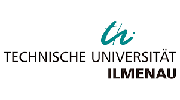Research areas

Our aim from the start was to provide theoretical solutions to build our energy system clean, stable, and economic. Our main research areas include:
Smartgrid
Smartgrid applies information and communications technology into existing grid in order to improve the reliability and economics of the production and consumption of electricity.
A new market structure and automated metering system are essential to implement Smartgrid in a real world. Also, various pricing programs and demand response need to be designed for fully achieving the potential benefits of Smartgrid.
Demand response
Demand Response can be implemented based on advanced metering systems (e.g. AMI). Under new market environments, end-used customers are offered choices to pay for their electricity usage.
For example, customers with real-time pricing program consume electricity based on the corresponding wholesale hourly market price. Thus, demand response (DR) is dynamic mechanisms to manage customer consumption of electricity in response to supply conditions.
Renewable energy
Renewable energy resources are widely integrated into electric power systems around the world. These resources are certain to have significant impacts on the system performance and efficiency and to necessitate advances in the planning and operation of the electric grid. The penetration of renewable resources to the electric grid produces technical challenges and provides opportunities to achieve higher level of reliability and efficiency.
Distributed generation and Microgrid
Distributed generation is active power sources placed near end-used customers to provide electricity with high quality, reliability and efficiency. irectly ts of Smartgridscs power systemst Distributed generation encompasses various types of prime-movers into electricity, e.g. microturbines, fuel cells, small wind turbine or solar panels, etc.
Microgrid is small power systems comprised of microsources, aggregate loads and energy storage. In some senses, the concept of Microgrid is to utilize distributed generation in the distribution level that fully achieves its potential benefits while to reduce the negative impacts.




